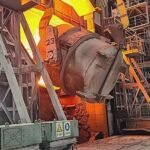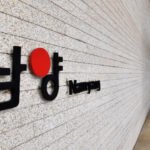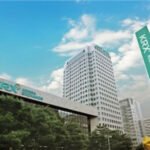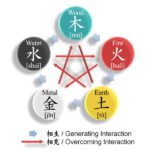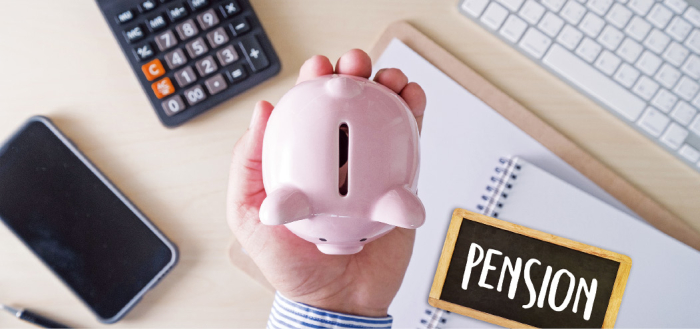
South Korea is planning a sweeping overhaul of its corporate retirement pension system by introducing a competitive, fund-based model that would pit large private-sector fund management firms against one another to enhance investment returns and efficiency.
The National Policy Planning Committee, an interim presidential policy advisory body that launched under the President Lee Jae-myung administration, has adopted the so-called “fund-type retirement pension” system as a key national agenda item, aiming to allow private entities managing assets of at least 50 trillion won ($36.4 billion) to compete for retirement savings, people familiar with the matter said on Wednesday.
The new system is designed to benchmark successful international models such as the Netherlands’ ABP and Australia’s superannuation system, while tailoring the structure to the Korean context, sources said.
Under the proposal, company employees would select from competing private retirement pension funds based on their investment strategies and performance.

Each fund would be managed collectively by professional institutions and be allowed to deploy capital into alternative asset classes such as real estate, infrastructure, venture capital, private equity and unlisted equities – a significant departure from the current system’s limited investment scope.
“The core of this reform is to allow two or more independent pension funds to compete on returns,” said a senior official at the committee. “We aim to move away from a system dominated by a single financial institution and toward a more dynamic, resilient pension market.”
COLLECTIVE DEFINED CONTRIBUTION (CDC) STRUCTURE
The reform would build on the success of Korea’s only existing fund-type pension model, dubbed Blue Seed, a government-initiated retirement fund launched in 2022 for small and medium-sized enterprises.

The fund posted a cumulative return of 14% last year, drawing praise for both its governance and investment performance. Officials now want to replicate and scale that model within the private sector, sources said.
The proposed framework will be based on a collective defined contribution (CDC) structure – a more advanced version of the existing defined contribution (DC) model.
While DC plans require individuals to choose and manage their own investments, the CDC model entrusts professional managers with pooled investments.
Returns, and ultimately retirement payouts, depend on the collective performance of the selected fund.
The Ministry of Employment and Labor, which oversees the retirement pension system, recently signaled support for allowing venture investments within the new pension architecture.

Sources said the committee is pushing further, hosting consultations with alternative investment experts to explore broader allocations while maintaining risk safeguards.
The reform signals a shift in how Korea, one of the world’s fastest-aging societies, is preparing for a new era of pension management.
Policymakers hope that increased competition, professional fund management, and diversification into higher-return assets will help future-proof the country’s retirement system, according to sources.
MOST SWEEPING REFORM IN 2 DECADES
Analysts said the government is embarking on its most sweeping pension reform in two decades to transition the underperforming corporate retirement savings system to an investment-led structure.
Since its inception two decades ago, Korea’s corporate retirement pension system has been largely dominated by principal-guaranteed savings accounts, with limited exposure to financial markets. More than 87% of contributions remain locked in low-return instruments.

Over the past five years, average annual returns have stagnated at just 2.35% – less than one-third the 7.63% delivered by the state-run pension fund National Pension Service (NPS) over the same period.
Officials said the current binary approach – between low-risk, low-return products and high-risk, high-return equity investments – offers too few options.
“There’s a missing middle: moderate-risk, high-return products,” said a policy committee official. “Alternative investments could fill that gap.”
The NPS’ own portfolio shows the potential.
Last year, its alternative investments returned 17.09%, outperforming even its overall portfolio.
Other institutional investors, including the Teachers’ Pension, Government Employees Pension Service (GEPS) and Korea Post, have also reported alternative returns in the 8–11% range in recent years.

LOOK TO MAKE WORKPLACE RETIREMENT SCHEMES MANDATORY
To ensure the scale of the proposed corporate retirement pension plan, the government is looking to make workplace retirement schemes mandatory in phases – starting with large employers and gradually extending to small businesses. Employers with more than 300 employees could be the first to be mandated, with smaller firms phased in over time, sources said.
Tax incentives are also being considered, especially for workers who commit to keeping their funds invested for more than 20 years and take distributions as annuities, rather than cashing out early – a common practice that has undermined the system’s long-term viability.
The new retirement fund system is expected to launch as early as next year, following legislation to revise the Retirement Benefit Security Act, according to sources.
The labor ministry plans to present detailed implementation plans to Parliament this autumn.
By Ji-Eun Ha, Yeong-Hyo Jeong and Yong-Hee Kwak
hazzys@hankyung.com
In-Soo Nam edited this article.



